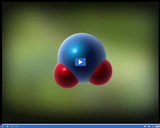
A water molecule is made of a relatively large oxygen atom and two smaller hydrogen atoms.
- Subject:
- Science
- Provider:
- Utah Education Network
- Author:
- Visual Learning Company
- Date Added:
- 02/28/2010

A water molecule is made of a relatively large oxygen atom and two smaller hydrogen atoms.

The water table moves up and down depending on how much water is in the ground. During droughts, the water table sinks. During times of heavy precipitation, the water table rises.
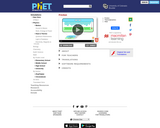
Move the Chemistry book and observe what happens. Best used as a demonstration and not a full lesson.
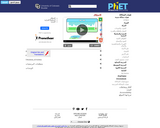
Learn how friction causes a material to heat up and melt. Rub two objects together and they heat up. When one reaches the melting temperature, particles break free as the material melts away. Arabic Language.

Prom night brings an intense moment of connection for two teens, unleashing a flood of texts and social media posts. Things start to move rapidly. How much does this relationship really mean? “Friday,” written by Hannah Schmidt of Fern Creek High School in Louisville, considers the role of electronic communication in the confusion of teen romance. It was among the seven short plays produced by the 2017 New Voices Young Playwrights Festival at Actors Theatre of Louisville.
Sensitive: This resource contains material that may be sensitive for some students. Teachers should exercise discretion in evaluating whether this resource is suitable for their class.

This lesson is about the importance of friends as part of a support system that helps students make healthy choices.
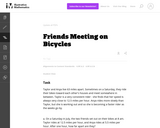
This series of 5 word problems lead up to the final problem. Most students should be able to answer the first two questions without too much difficulty. The decimal numbers may cause some students trouble, but if they make a drawing of the road that the girls are riding on, and their positions at the different times, it may help. The third question has a bit of a challenge in that students won't land on the exact meeting time by making a table with distance values every hour. The fourth question addresses a useful concept for problems involving objects moving at different speeds which may be new to sixth grade students.
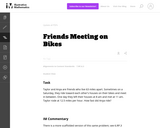
This taks is word problem requires students to calculate distance and speed.
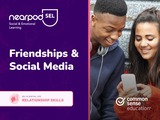
This lesson uses Nearpod to examine the positive and negative elements of using social media. The resource uses a video, collaboration and interactive strategies to explore the ways that social media can effect the lives of teenagers.
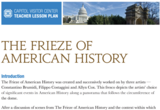
What historic events are featured in the Frieze of American History? How do these moments reflect both the history of our nation and the time within which they were selected to be included in the Frieze?
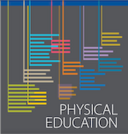
In this lesson plan, educators will teach their students basic throwing mechanics of backhand and forehand throws with a frisbee and apply what they learn in a game of Kan Jam.

The CyberSquad tries to figure out how Hackerë_í__ cyberfrog moves when its various buttons are pressed, in this video from Cyberchase.

In this video from Cyberchase, the CyberSquad must figure out the new input/output pattern on Hackerë_í__ larger cyberfrog.

David Huffman is a Bay Area artist who heavily uses basketballs and astronauts as symbols of African Americans' cultural trauma and historical homelessness. He uses these two specifically because they serve as metaphors for self-discovery in a place that has been previously hostile. Basketball is a sport that connects cultural divides, and the astronaut suit protects those who are venturing into dangerous places in order to see things they have never seen before.

Students will illustrate the life cycle of a butterfly and compare a butterfly's life cycle to that of a different insect or animal.

Students will construct a model of a cell in order to identify organelles and their function as they build an understanding of the increasing complexity of tissues, organs, organ systems, and organisms.
!["From Citizen, VI [On the train the woman standing]," Claudia Rankine](https://img.oercommons.org/160x134/microsite-uen-prod/media/upload/materials/screenshots/materials-course-27820.png)
This lesson plan is the second in the "Incredible Bridges: Poets Creating Community" series. It provides a video of the poet Claudia Rankine reading the poem "from Citizen, VI [On the train the woman standing]" and a companion lesson with a sequence of activities for use with secondary students before, during, and after reading to help them enter and experience the poem.

In this episode of UEN's PDTV, we travel to Middle Canyon Elementary in Tooele to meet Abish Jimenez, a 3rd-grade Spanish teacher who is transforming Chromebooks in her classroom into tools for collaboration, creativity, communication, and critical thinking. Watch to see how her students thrive in a technology-driven learning environment.
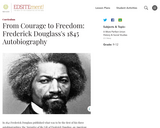
In 1845 Frederick Douglass published what was to be the first of his three autobiographies: the Narrative of the Life of Frederick Douglass, an American Slave, Written by Himself. As the title suggests, Douglass wished not only to highlight the irony that a land founded on freedom would permit slavery to exist within its midst, but also to establish that he, an American slave with no formal education, was the sole author of the work.
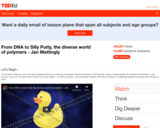
You are made of polymers, and so are trees and telephones and toys. A polymer is a long chain of identical molecules (or monomers) with a range of useful properties, like toughness or stretchiness -- and it turns out, we just can't live without them. Polymers occur both naturally -- our DNA is a polymer -- and synthetically, like plastic, Silly Putty and styrofoam. Jan Mattingly explains how polymers have changed our world.